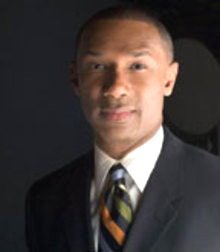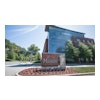 Dr. Johnny C. Taylor, CEO of the Thurgood Marshall Scholarship Fund, says communicating with faculty and alumni about positions taken has become a key part of the advocacy process.
Dr. Johnny C. Taylor, CEO of the Thurgood Marshall Scholarship Fund, says communicating with faculty and alumni about positions taken has become a key part of the advocacy process.Public funding is the life blood of higher education, specifically from financial aid, grants and contracts. Advocacy often determines not only how much public funding an institution will receive, but whether its concerns and those of its students will be taken into account as federal and state policies, programs and contracts are being developed.
In the 1980s, advocating on behalf of historically Black colleges was the main province of one organization: the National Association for Equal Opportunity in Higher Education (NAFEO). The organization focused on meeting with and educating policymakers, hosting networking and skill-building events for institutional leaders and pushing for policies and programs that benefited their member institutions. Occasionally, NAFEO mobilized alliances to advance a piece of legislation or to protest an injustice.
These days, there are more higher education advocates and the scope of advocacy work is broader. Besides meeting with policymakers to educate them about the needs and concerns of underrepresented and first-generation students, advocates initiate and help shape policy; train institution leaders to be their own advocates at the federal, state and local levels; track and intervene in judicial matters; and even reach out to alumni and faculty.
To be an effective advocate, an organization must develop strong relationships with traditional media; be able to collect, analyze and use data to support their messaging; cultivate partnerships and alliances with similar and non-similar individuals and organizations; understand how to use social media; and take control of the public narrative about underrepresented students and their institutions.
The importance of advocacy became clear in the fall of 2012, when the U.S. Department of Education tightened the underwriting standards for its Parent PLUS loan (PPL) program. Historically Black and predominantly Black institutions (PBIs) were hit especially hard since many of their students rely on government aid to help pay for college. Under the new revisions, thousands of PPL applications were denied, prompting last-minute dropouts at dozens of institutions, thereby decreasing enrollment and costing the institutions millions in expected income.
HBCU advocates immediately sprang into action. They collectively admonished the Obama administration for not alerting HBCU leaders about the policy change beforehand, and demanded prompt action to redress the effects of the administration’s actions. Education Secretary Arne Duncan apologized for the way the change was handled. Although the Education Department has not reversed the new policy, it has been working with HBCUs to find ways to repair the damage — both to students and the institutions. This spring, for instance, HBCU advocates are participating in a new round of negotiated rulemaking for the PPL program.
Of the hundreds of organizations dedicated to advocacy in Washington, D.C., today, three focus on the interests of HBCUs/PBIs and the students they serve: NAFEO, the United Negro College Fund (UNCF) and the Thurgood Marshall College Fund (TMCF). Along with the Congressional Black Caucus, the White House Initiative for Historically Black Colleges — which advocates for these institutions within the Department of Education — and a handful of consultants and other allies on Capitol Hill, these organizations help steer billions in public resources to institutions that serve African-Americans and other underrepresented groups.
Growing advocacy in D.C.
Advocacy has been NAFEO’s core mission since it began in 1969, under the leadership of Dr. Niles Fisher.
“[Our job] is to advocate on behalf of the community and to deliver both public resources and public private partnerships — mostly federal, but also at the state level,” says Lezli Baskerville, president and CEO, adding that her organization is also a leader in judicial advocacy.
Today, NAFEO represents all of the nation’s public and private historically Black institutions and about a third of all PBIs. Baskerville says that some policymakers still don’t understand these institutions or the contributions they make to the nation, nor do they recognize the obstacles HBCUs and PBIs face. This lack of understanding makes advocacy essential.
“Our institutions are preparing the next cohort of diverse workers and entrepreneurs,” says Baskerville.
When the United Negro College Fund launched in 1944, its focus was raising scholarship funds. That all changed in the 1990s as financial aid and Title III began to play a larger role in higher education.
“Former congressman and then-UNCF CEO Bill Gray, who was a master of politics, established the UNCF Government Affairs program,” says UNCF President and CEO Michael Lomax. Gray moved UNCF’s national headquarters from New York City to Fairfax, Va., in 1994 and hired a full-time government affairs staff to focus on advocacy. Some observers saw the move as a rebuff of NAFEO, but Gray and the UNCF member presidents saw it as a way to pursue advocacy issues that were of particular concern to them as private institutions. Most NAFEO members are public institutions.
When the Thurgood Marshall Scholarship Fund emerged in 1987, under the leadership of Dr. N. Joyce Payne, its mission was to raise scholarship funds for students attending public HBCUs. But in 2007, the organization changed its name to the Thurgood Marshall College Fund and broadened its scope to include advocacy, among other priorities. CEO Johnny C. Taylor, who was a board member at the time, recalls donors urging the organization to assert greater influence on policy.
“‘You’ve got to make sure that, on the state and federal level, you get in front of legislative decisions and policy decisions,’” Taylor recalls donors saying. TMCF has had an advocacy presence since.
Over the years, as the advocacy operations of UNCF and TMCF expanded, some onlookers questioned whether NAFEO was still needed, “as if this is a zero-sum game,” Taylor says.
Each organization, in its own right, plays an important role. Collectively, they have yielded tremendous benefits for HBCUs and for Black college students everywhere. The fight to preserve and increase the Pell Grant Program, the recent PPL situation and an $850 million increase in Title III funding are just a few examples. In recent decades, they’ve also worked together with advocates for Hispanic-serving institutions and tribal colleges. The Alliance for Equity in Higher Education was born out of these groups’ shared interests.
“This is the new America and we are the new American alliance,” Lomax says about the coalition. “We need to lock arms together and make the case that supporting low-income, first-generation students, and the colleges and universities that serve them and know them best, is critically important for America to achieve its educational aims.”
Sustaining in digital age
Over the years, advocacy tactics have shifted to meet the demands of the times. These days, influencing policymakers is just the beginning.
“You can’t just go and talk to the people you want to get money from,” Taylor says. “Often-times, you have to take a position and speak to your alums and your faculty.”
Sustaining contact with alumni is one reason advocacy organizations are developing their social media capacity. These tools provide new opportunities for HBCUs to communicate with and mobilize their members, affinity groups and legislators in dynamic ways.
“Once we get the social media piece of [our network] working, we’ll be able to build a significant database, all around the country, of people who are either alumni, parents or just supporters of HBCUs and of low-income students who need the support of the federal government,” says Lomax.
Shaping and controlling their own message is another high priority for these institutions. Too many people still view HBCUs and PBIs as a monolith.
“This community is so richly diverse,” Baskerville says. “Everything that you have in majority White institutions, you have here.”
 Dr. Johnny C. Taylor, CEO of the Thurgood Marshall Scholarship Fund, says communicating with faculty and alumni about positions taken has become a key part of the advocacy process.
Dr. Johnny C. Taylor, CEO of the Thurgood Marshall Scholarship Fund, says communicating with faculty and alumni about positions taken has become a key part of the advocacy process.Dr. Ivory Toldson, a Howard University professor who recently became deputy director of the White House Initiative on HBCUs, adds that when people who don’t understand these institutions control the message, the complexities and nuances are often lost and the resulting portrayals can be negative.
“One of the specific things we’ve recently done to promote a more positive message is to institute an HBCU All-Star program,” says Toldson. The new program showcases the talent the schools are producing. “A lot of good [news] stories came out of that [to] help people understand what type of magic happens at HBCUs.”
While the new outreach and messaging tactics are welcomed, advocates agree one thing hasn’t changed.
“The old-fashioned work ain’t goin’ nowhere,” Lomax says. “That is building relationships with elected officials and the people in Washington who are the deciders. You’ve got to figure out how to talk [to] them and get access to them. And you do that by knocking on doors, sitting in offices and building those relationships over time.”


















